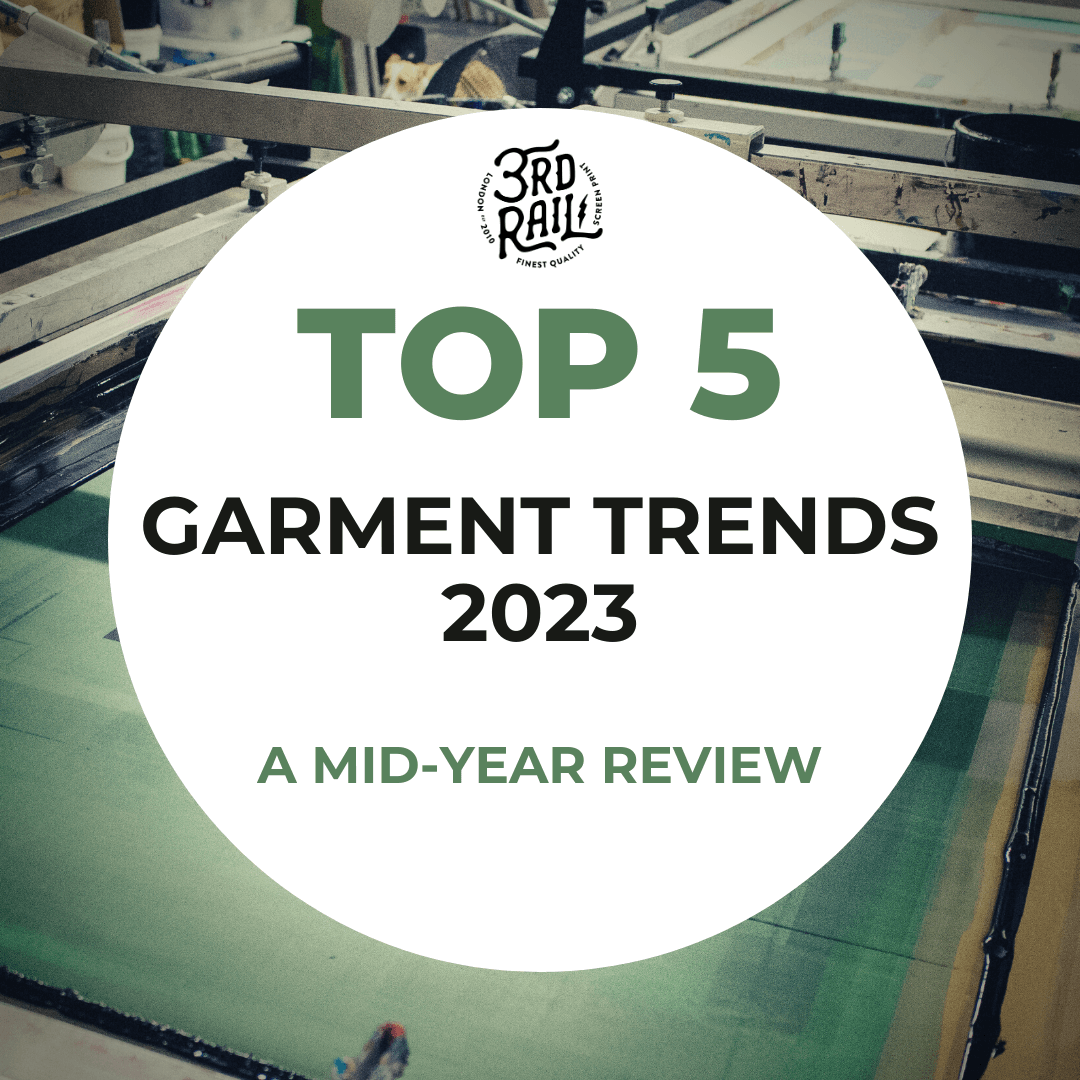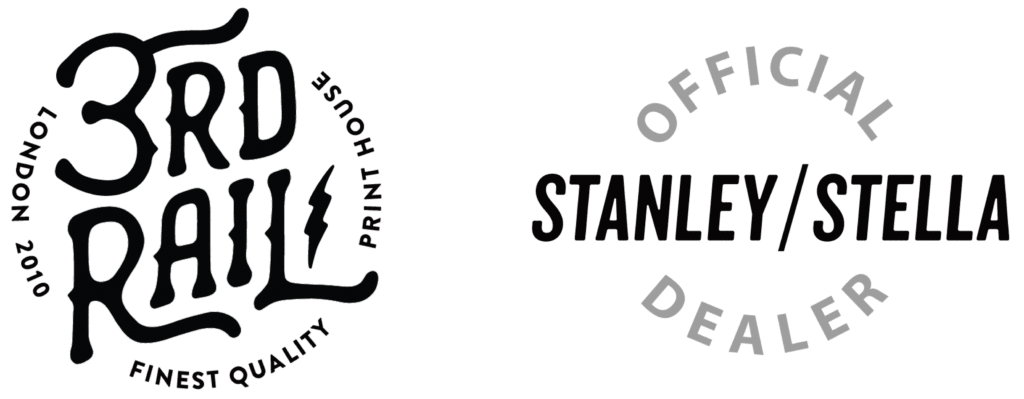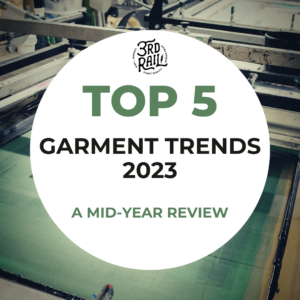
As we pass the midpoint of 2023, it’s a great time to pause and assess the ever-evolving landscape of the garment printing industry. The start of the year was rife with predictions and forecasts about what would be trending, and now, we have a chance to review the reality. Has eco-friendly printing gained the traction we expected? Has Direct-to-Garment (DTG) printing become as popular as we had anticipated? Are customization and personalization defining the industry? And is the nostalgic return of retro-inspired designs evident? Let’s explore these questions and look at the evidence that highlights how these trends are unfolding
Trend 1 – Going Green: The Rise of Eco-Friendly Printing
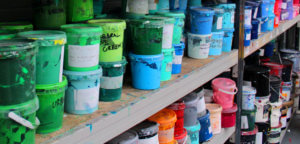 As we navigate through the year, the environmental impact of the fashion industry remains an ever-pressing concern for brands and consumers alike. According to a 2023 report by the Environmental Protection Agency (EPA), the fashion industry contributes to approximately 10% of global greenhouse gas emissions and nearly 20% of wastewater. As a result, the prediction of a rising trend towards eco-friendly garment printing has begun to actualize.
As we navigate through the year, the environmental impact of the fashion industry remains an ever-pressing concern for brands and consumers alike. According to a 2023 report by the Environmental Protection Agency (EPA), the fashion industry contributes to approximately 10% of global greenhouse gas emissions and nearly 20% of wastewater. As a result, the prediction of a rising trend towards eco-friendly garment printing has begun to actualize.
Traditional printing methods, notorious for their extensive chemical use, are being increasingly replaced by more sustainable practices. A 2023 survey by the Sustainable Fashion Alliance found that 70% of fashion brands are now actively seeking more sustainable printing methods.
Now, halfway through 2023, eco-friendly printing has begun to hold its ground firmly in the spotlight. The use of water-based inks, which pose a stark contrast to traditional plastisol inks, has seen a significant surge.
According to market research firm Technavio, the global water-based ink market is expected to grow by $3.4 billion from 2021 to 2026, at a compound annual growth rate (CAGR) of over 6%. These inks, characterized by their non-toxic, lead-free properties and their ability to produce vibrant prints, are enabling brands to maintain a commitment to delivering high-quality products without compromising their environmental responsibilities.
The shift towards sustainable printing, which seemed a mere trend at the start of the year, is taking shape, marking a promising change in the garment printing industry.
Trend 2 – Direct-to-Garment (DTG) Printing
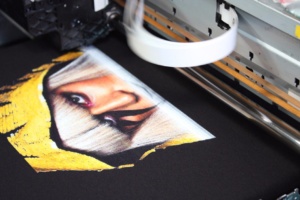 Direct-to-Garment printing, also known as DTG, has undoubtedly disrupted the industry. This technology functions similarly to a standard inkjet printer, but with one notable difference: instead of paper, it prints directly onto fabric. The images it produces are detailed, crisp, and encompass a broad colour spectrum.
Direct-to-Garment printing, also known as DTG, has undoubtedly disrupted the industry. This technology functions similarly to a standard inkjet printer, but with one notable difference: instead of paper, it prints directly onto fabric. The images it produces are detailed, crisp, and encompass a broad colour spectrum.
As we navigate the midpoint of 2023, the popularity of DTG is indeed manifesting its predicted upward trajectory. One of the primary reasons for its surge in popularity lies in its cost-effectiveness for small print runs. According to a recent study by Smithers, a global leader in market research, the DTG printing market is expected to reach $2.31 billion in 2023, growing at a compound annual growth rate (CAGR) of 12.3% from 2018.
DTG printing has become the go-to solution for brands that aim to test designs or offer limited-edition products. A 2023 survey by the Fashion Industry Association showed a 35% increase in the number of brands adopting DTG printing for small-scale production and limited-edition runs compared to the previous year.
This flexibility paves the way for creativity to thrive and for customer engagement to intensify. In fact, a recent report by Deloitte states that 40% of consumers are willing to pay a premium for personalized products, highlighting the potential for brands to increase customer engagement through DTG printing.
The evolution and acceptance of DTG printing in the industry, which was projected at the start of the year, is indeed materialising, and the robust data backing it paints a promising picture for the remainder of 2023.
Trend 3 – Customization and Personalization
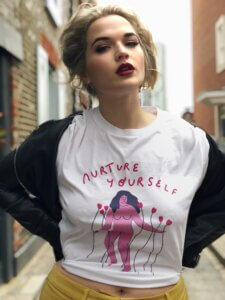
In a time characterized by mass production, customization has emerged as a revitalizing element. As we had anticipated earlier this year, personalised prints have indeed become a prominent trend. Brands have been empowering their customers to participate actively in the design process, fostering a deeper connection with the products they buy. This level of personalization offers a distinctive customer experience, nurturing brand loyalty.
A report by Deloitte in 2023 suggests that 1 in 3 consumers want the ability to personalise their products, further demonstrating the growth and demand of this trend. Moreover, data from a Salesforce study reveals that customers who engage with personalized shopping experiences demonstrate a 20% higher brand loyalty rate.
Personalised prints can span from straightforward text elements such as names or quotes to more intricate graphics like personal photographs or custom artwork. With the advancements in printing technology, the possibilities have indeed proven to be boundless.
This push towards customization and personalization, predicted at the start of the year, is evidently materialising. The data and trends emerging halfway through the year are a promising indication of this shift becoming more pronounced in the latter half of 2023.
In an era of mass production, customization is a breath of fresh air. It’s no surprise that personalised prints are a major trend this year. Brands are empowering their customers to have a say in the design process, allowing them to feel more connected to the products they purchase. This level of personalization provides a unique customer experience, fostering brand loyalty.
Personalised prints can range from simple text elements such as names or quotes, to more complex graphics like personal photographs or custom artwork. With the advancements in printing technology, the possibilities are endless.
Trend 4 – Retro Is Back
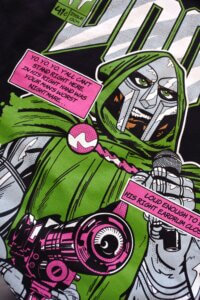
There’s an inherent comfort in the familiarity of past times, and in 2023, retro-inspired designs are indeed experiencing a resurgence. As predicted, these designs aren’t merely being replicated; they’re being reimagined and reincarnated. Vintage graphics are converging with contemporary style, crafting a harmonious blend of the old and new.
Designers have been innovatively playing with elements of 70s, 80s, and 90s fashion, whilst infusing a modern twist. These nostalgic designs, coupled with the state-of-the-art printing technologies, are creating distinctive pieces that appeal to a diverse demographic.
A fascinating amalgamation of the retro and the modern, predicted at the year’s outset, is indeed coming to life. With compelling evidence indicating its continued rise, this trend is likely to gain even more momentum as we venture into the latter half of 2023.
Trend 5 – AI-Generated Designs: The Unstoppable Innovation

Artificial Intelligence (AI) continues to pervade various facets of our everyday lives, and its significant impact on the realm of garment printing is undeniably shaping up as we had foreseen. AI’s role in generating unique and personalised designs based on user input and preferences is revolutionising the industry.
In a time where personalization is paramount, AI has proven to be an influential catalyst. Brands are deploying this technology to provide an unmatched level of customization. When customers input their preferences, the AI software generates a design that’s uniquely tailored to their specific tastes.
According to a study by McKinsey, AI could contribute to a global economic activity increase by approximately $13 trillion by the end of 2023, reinforcing the belief that AI’s influence is here to stay and expand. Artists and designers are acknowledging this and exploring ways to synergize with AI to enhance creativity, rather than perceiving it as a threat.
AI’s role in the design process is transforming the way artists create, offering new possibilities for experimentation, iteration, and innovation at a much accelerated pace. As we look forward to the future, we may see more hybrid designs, where AI and human creativity meld to produce designs that are not only personalized but also imbued with a depth and complexity that reflect human ingenuity.
In summary, AI isn’t usurping the creative process; it’s set to become an indispensable tool in an artist’s kit, opening new channels for artistic expression and pushing the boundaries of what’s feasible in garment design.
Conclusion
As we look back at the first half of 2023, it’s clear that the garment printing industry is undergoing a fascinating period of transformation. The industry is progressively embracing sustainable practices, harnessing innovative printing techniques like DTG, and personalizing designs like never before. The yearning for nostalgia is being met with the revival of retro styles, and technology, especially AI, is playing a pivotal role in driving unique, customer-centric designs. It’s an exciting time to be a part of the garment printing world. As we venture into the second half of the year, we look forward to witnessing how these trends continue to evolve and reshape the future of fashion.

